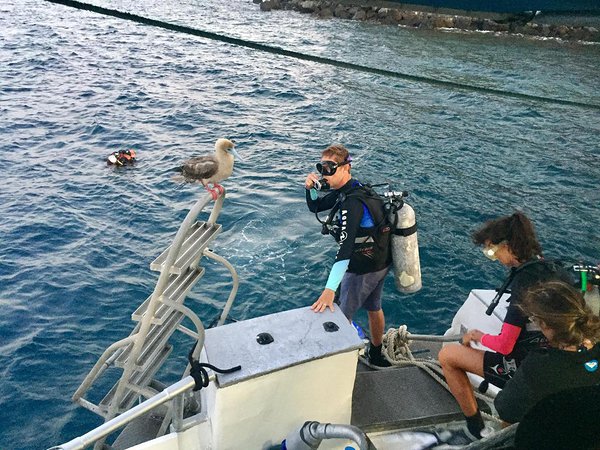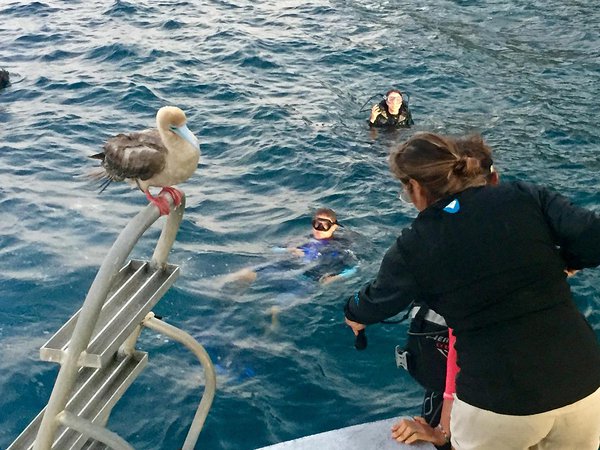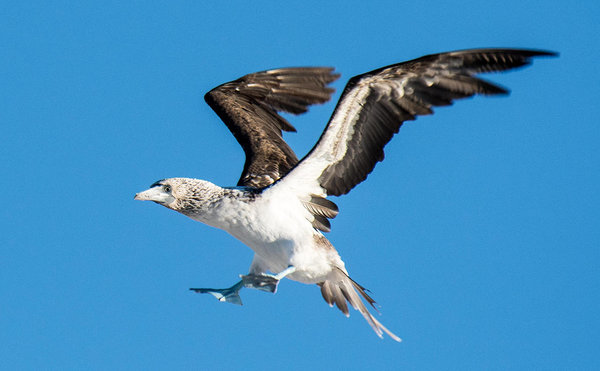Boobies
On a recent trip we got lucky enough to have a red footed booby come and spend some time on the boat with us. As I had not seen a red footed booby before it got me thinking that it should be the topic for this latest blog. Writing this today brings back memories from just over two years ago. Today the sky is overcast as we await for Hurricane Lorena to move past the Baja Peninsula, two years ago it was Tropical Storm Lidia. Thus far we have been very lucky this season as we have not received any hurricane or storm threat until this weekend. At the time of writing it seems as though Lorena will pass by the southern tip and the Los Cabos are before heading up the west coast of Baja and out to sea and thus giving us pacenos a bit of breathing room. As always we hope that everyone stays safe and out of harms way.
Back to the topic of my blog – boobies! The booby is a type of seabird and there are 6 different species – Blue footed, Brown, Red-footed, Masked, Nazca and Peruvian. Here around La Paz and Espiritu Santo we mainly see brown and blue footed therefore this red one was quite a treat! The booby gets its name as a derivative from the Spanish word bobo. This means foolish or clown and they were given this name due to their clumsy appearance on land and the way that they dance to attract a mate. The red-footed booby is the smallest in the family and will weigh upto 1kg and be about 75cm tall. The plumage comes in a variety of different colours called morphs, some are predominantely brown and others more white. Whatever the colour of their feathers they all share the same blue beak and red feet. Both males and females have red feet and the males use them to help win the affections of a female so that they form a monogamous breeding pair for at least one if not a few seasons. The females will lay on egg around every 15 months and the pair must care for that baby until it is ready to fledge the nest after 2-3 months. Being seabirds boobies feed predominantly on fish and squid and they are well adapted to dive down and get them with their streamlined bodies and long beaks. At this time of year I see lots of blue-footed and brown boobies around Los Islotes as they feed on the schools of baitfish there.
These photos of the booby resting on our dive ladder were taken in Ensenada Grande, a bay close to Los Islotes. It was happy to hang out with us for around an hour taking a rest on the railings before flying away.
The blue footed booby is commonly associated with the Galapagos Islands but I see them in a few different spots here mainly around Los Islotes and also Isla Gaviotta. Similar in size and colour to our red footed friend the blue footed booby obviously has a different shade to its feet. The bluer the feet the healthier the bird and therefore the more likely they are to find a mate. This is the case for both males and females so both need to make an effort to eat well and stay healthy!



